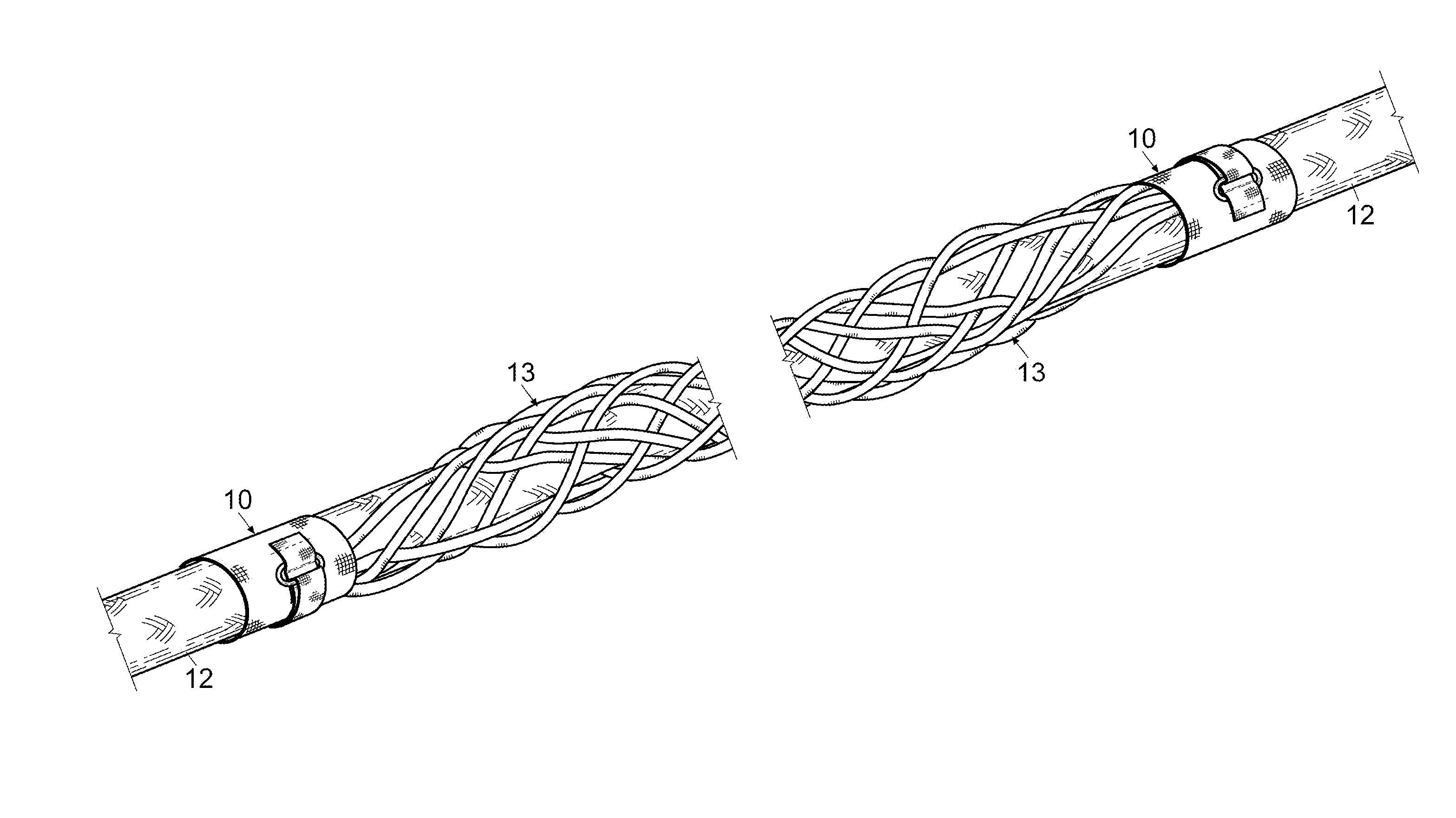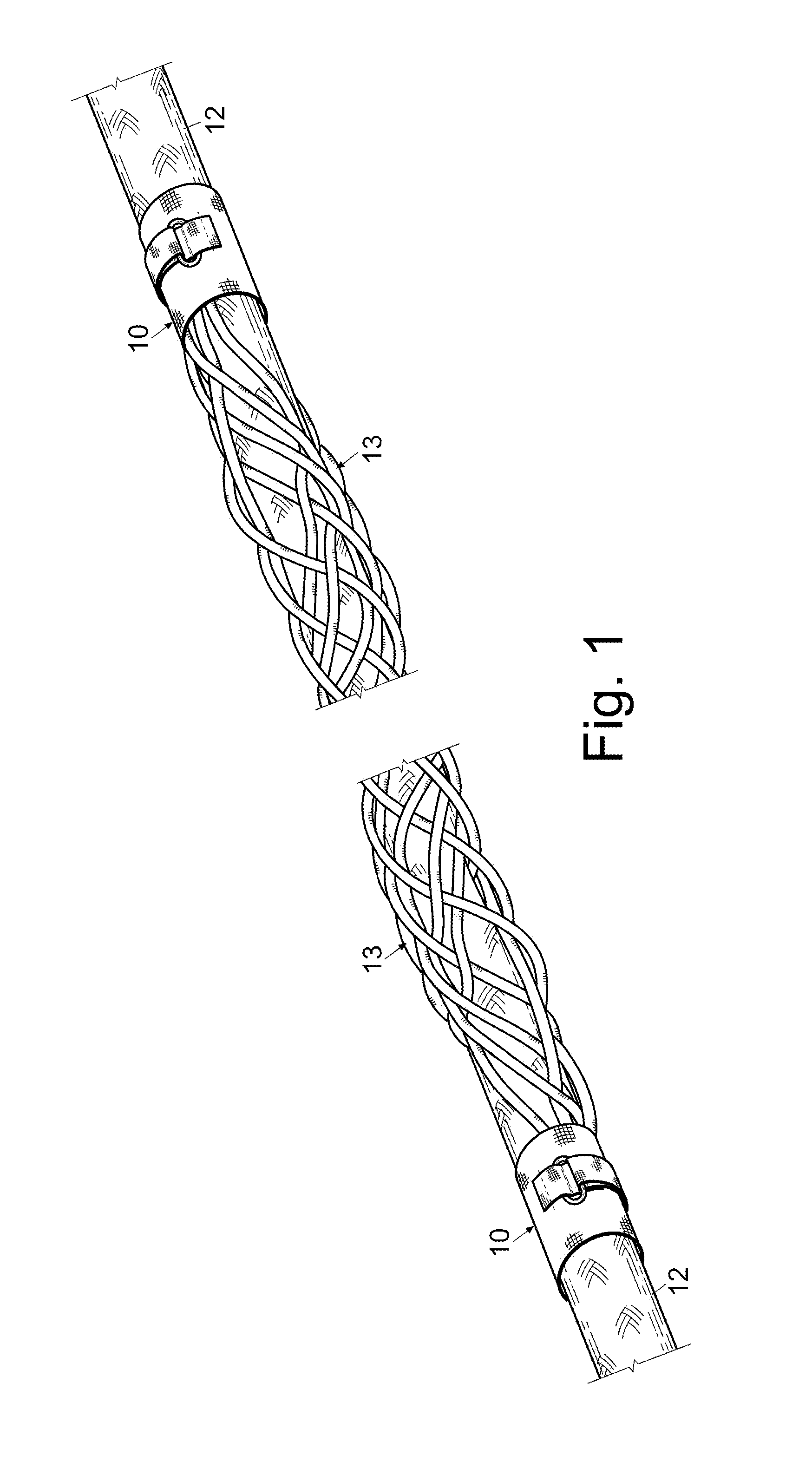Rope cuff
- Summary
- Abstract
- Description
- Claims
- Application Information
AI Technical Summary
Benefits of technology
Problems solved by technology
Method used
Image
Examples
Embodiment Construction
[0018]For a better understanding of the invention and its operation, turning now to the drawings, FIG. 1 illustrates a pair of mooring line cuffs 10 installed on mooring line 12, represented with break lines to signify indeterminate length. As would be understood, shoring lines 13 are braided around the exterior of mooring line 12 to reduce the friction imparted by docks or other mounting surfaces on mooring line 12, for example when a ship (not shown) is secured in port and moves with the tides. Although a single rope cuff 10 may be utilized, with the opposing ends of shoring lines 13 interwoven into the body of mooring line 12 as is known in the art, such is not preferred as it is extremely difficult, time-consuming, and expensive to weave shoring lines 13 in this manner.
[0019]FIG. 2 illustrates an interior (i.e. mooring line 12 proximal) front plan view of rope cuff 10 with a portion of interior flap 15 cut away to show the attachment of shoring lines 13 to cuff interior 16. Pref...
PUM
| Property | Measurement | Unit |
|---|---|---|
| Friction | aaaaa | aaaaa |
| Displacement | aaaaa | aaaaa |
Abstract
Description
Claims
Application Information
 Login to View More
Login to View More - R&D
- Intellectual Property
- Life Sciences
- Materials
- Tech Scout
- Unparalleled Data Quality
- Higher Quality Content
- 60% Fewer Hallucinations
Browse by: Latest US Patents, China's latest patents, Technical Efficacy Thesaurus, Application Domain, Technology Topic, Popular Technical Reports.
© 2025 PatSnap. All rights reserved.Legal|Privacy policy|Modern Slavery Act Transparency Statement|Sitemap|About US| Contact US: help@patsnap.com



